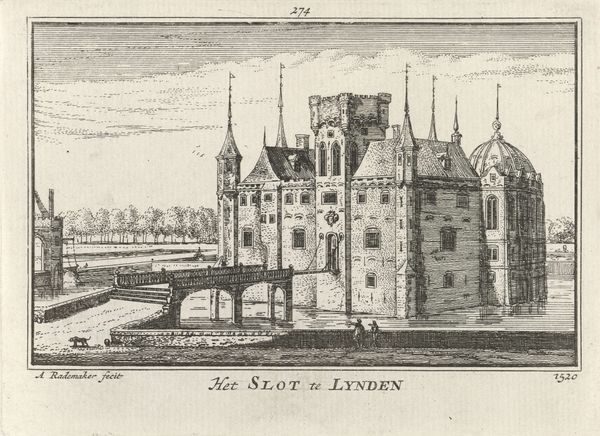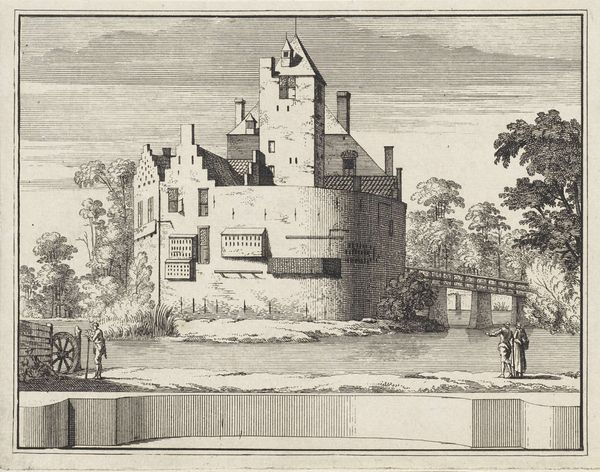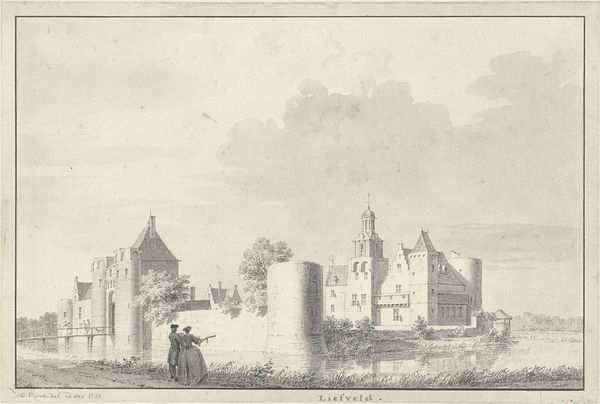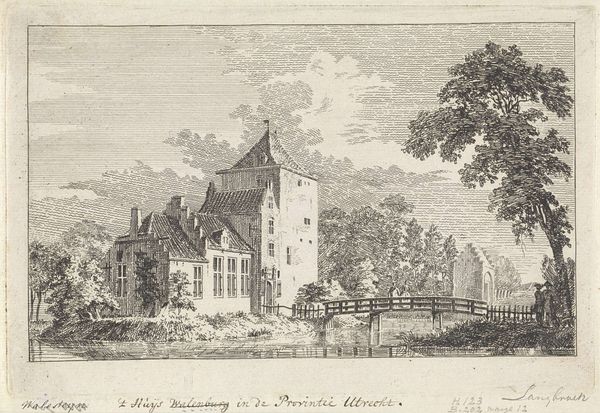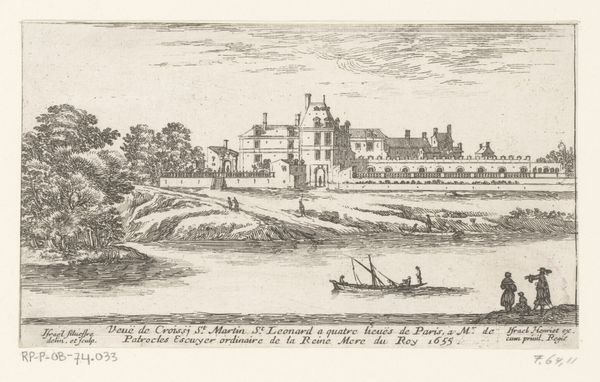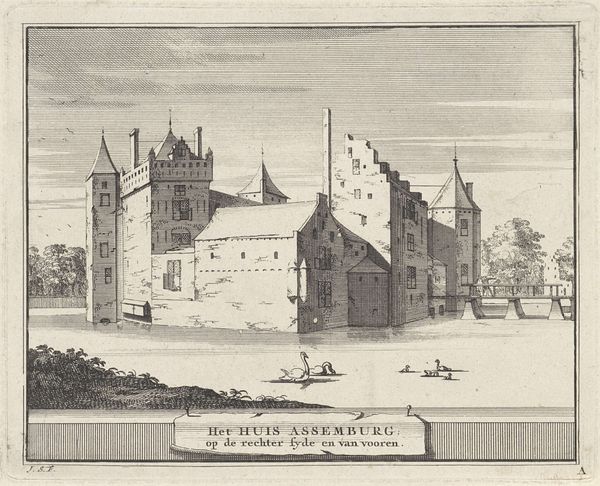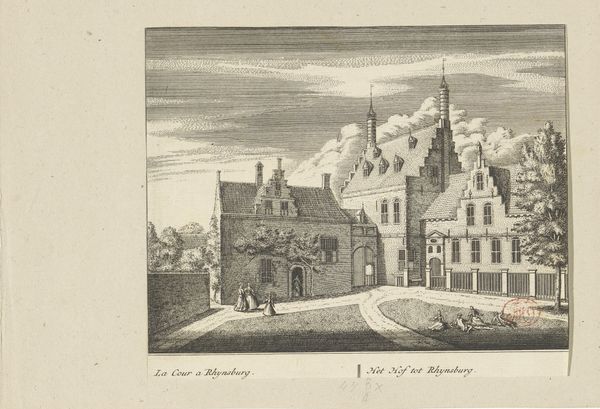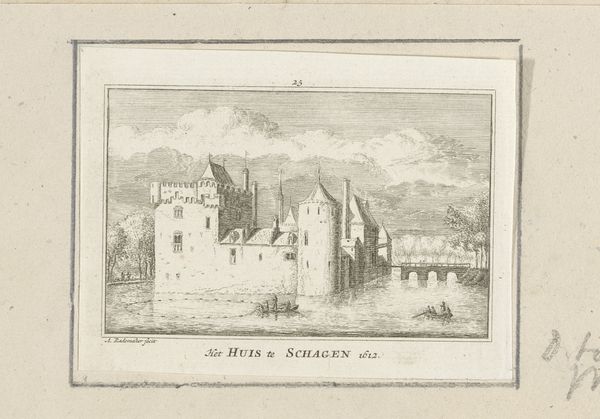
print, etching, architecture
#
baroque
#
dutch-golden-age
# print
#
etching
#
landscape
#
etching
#
cityscape
#
architecture
Dimensions: height 80 mm, width 115 mm
Copyright: Rijks Museum: Open Domain
Abraham Rademaker etched this view of Spangen Castle in the Netherlands, sometime between 1675 and 1735. Castles had immense social and political significance, embodying power and control. Though the image bears the date 1550, it's important to remember that Rademaker created this print nearly two centuries later. Views of castles and country houses became popular as the Dutch Republic's economy expanded and a wealthy merchant class emerged. Prints like this were collected in albums called "pleasant prospects," idealizing the Dutch countryside. This print participates in the creation of a shared cultural memory, shaping views of the past for a new, affluent audience. To truly understand this image, we can examine estate records and historical maps. Rademaker's etching isn't just a neutral record; it reflects the values and aspirations of his time. By exploring the historical context, we can see how art actively shapes our understanding of culture and identity.
Comments
No comments
Be the first to comment and join the conversation on the ultimate creative platform.



